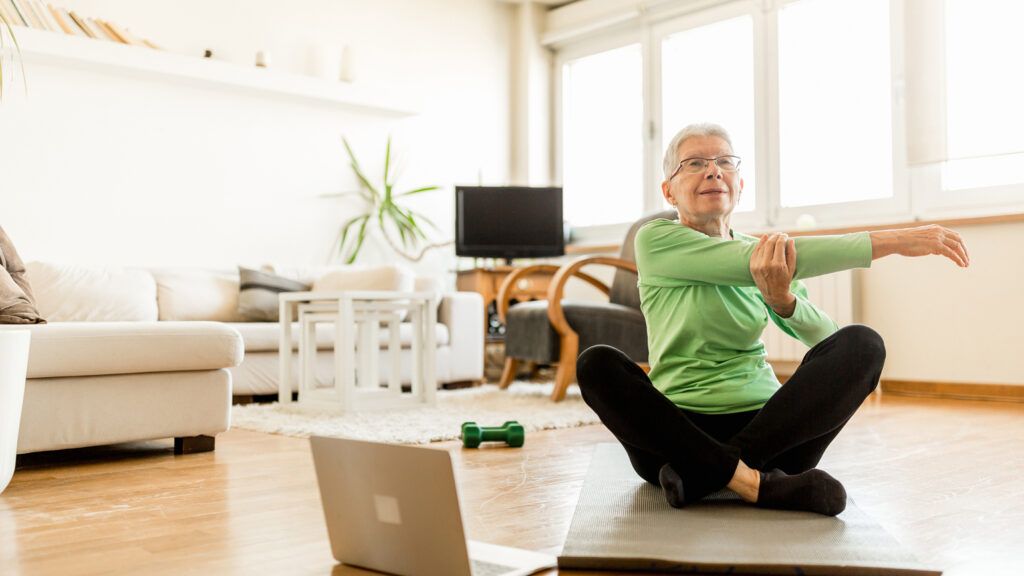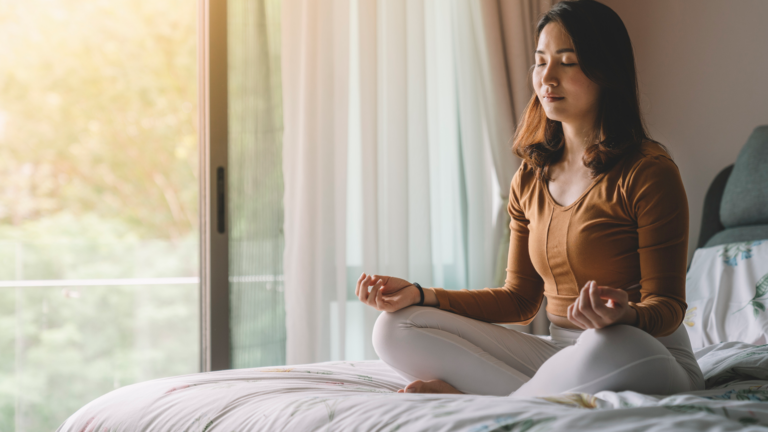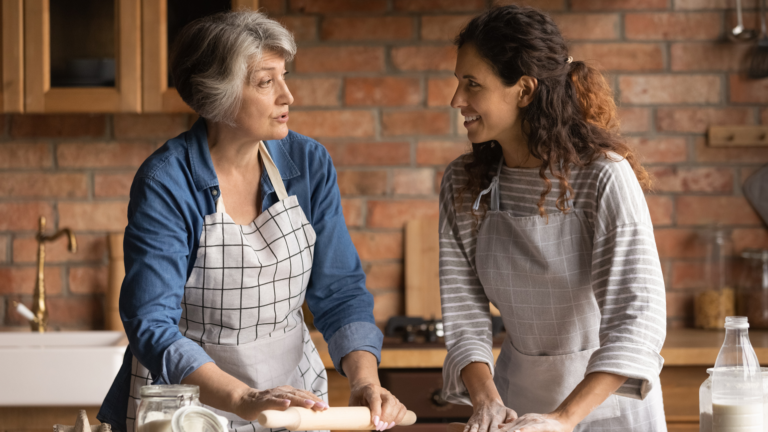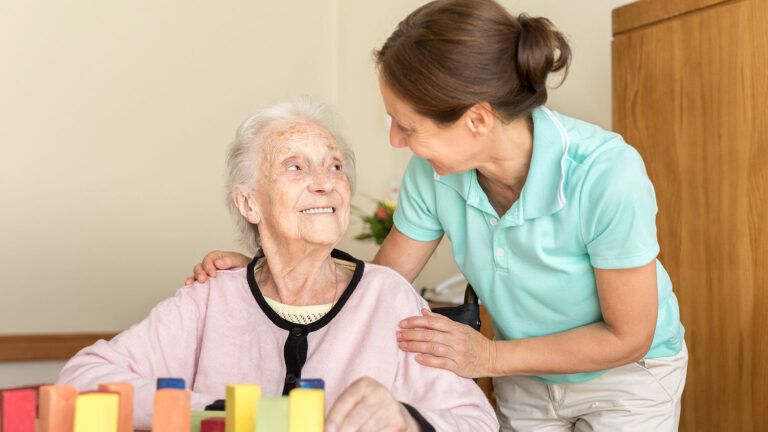One of the most helpful things you can do as a caregiver is to keep your loved one moving on a regular basis. Physical activity is an important lifestyle element for any older adult.
If your loved one lives with dementia, it may take some extra effort and encouragement on your part, but it’s worth it. As long as the activity is tailored to his or her specific abilities, exercise offers a host of pluses.
Whether it’s slightly vigorous or gentle, exercise increases blood flow to the brain and throughout the body, reducing potential dementia risk factors like high blood pressure, diabetes and high cholesterol. It can also lessen behavioral problems and fall risk and delay the onset of depression, confusion and apathy for people who have dementia. It’s also a good way for your loved one to maintain healthy weight and sleep habits. For those who have mild cognitive impairment, physical activity can improve memory, reasoning, judgement and thinking skills.
If you’re so inclined, you can boost your feel-good endorphins together by exercising with your loved one. You may instead choose to take your loved one to an exercise class at a nearby senior center, or hire a skilled in-home care aide to take him or her on a walk or guide some simple indoor stretching exercises.
Regardless of your approach, there’s no time like the present to get started (as long as you have a doctor’s okay). Make sure your loved one wears comfortable clothing and shoes that fit and work well for movement. Work exercise into his or her routine gradually, beginning with mini-workouts and breaking things down into easy-to-follow steps. Here are some suggestions to help you tailor exercises to your loved one’s needs and abilities:
Exercise tips for older adults with mild-to-mid-stage cognitive impairment:
- Demonstrate. Slow step-by-step follow-along instructions are great, as they reduce cognitive demands. Help your loved one learn basic movements by watching you do them.
- Let the music move you. Favorite tunes amp up the fun factor and can eliminate feelings of drudgery, especially if your loved one is averse to exercise. Move freely to music. If your loved one has balance issues, sit in chairs and let your arms flow along to the rhythm. Of course, you can do any sort of exercise along to music to make it more fun.
- Fall prevention. As long as your loved one is able to stand on his or her own without support from others, fall prevention exercises can be very beneficial. Learn more for an online demonstration.
- Walk. Take a short spin around the yard to smell the flowers and watch the birds. If your loved one is up for more, take slightly longer walks in a park or nature spot. Again, if balance is an issue, take it slow and link arms. Stretch your legs at a mall, indoor gym or community center when the weather’s cold.
- Learn from teachers. Try a DVD or online exercise demonstration that’s geared to older adults. Or take your loved one to your community senior center if exercise classes for older adults are offered.
- Tai Chi. One of the most effective, gentler forms of exercise for older adults is tai chi. Research has shown that it has the potential to enhance cognitive function, especially for those without significant impairment. Ask your senior or community center whether classes are available, or try a DVD or online series of classes.
- Do what your loved one loves to do. Maybe your mom was a lifeguard or your dad liked to hike or garden. Create a streamlined version of favorite activities. Try light swimming or water aerobics, plant some flowers or rake leaves together. Someone who loved to hike may enjoy a short walk up a beautiful trail.
- Simple stretches. If your loved one is able to get onto a mat, do some basic stretches together. Again, a DVD or online demonstration, or even a book, can show you how to do them safely. Stretches can be done from a chair, as well, if it’s too difficult for your loved one to get onto and off of a mat. Learn more simple stretches for older adults.
- Stretch bands. Elastic stretching bands are a good tool. Demonstrate how to use the bands for light resistance training. Move smoothly together through simple leg presses and bicep curls. Learn more helpful resistant band exercises for people over 60.
- Incorporate breathing exercises. Proper breathing is a component of physical well-being. Start by taking a focused breath that fills up the abdomen, bringing oxygen up into the head and throughout the rest of the body. Show your loved one how to do focused breathing and try to do it together at points throughout the day.
- Turn light housework into exercise. Do some dusting, fluff pillows, fold laundry. You can even lift kitchen cans as weights. Any movement is beneficial and getting things done together can be a good feeling. Just be careful to take things easy.
- Don’t force it. Go at your loved one’s pace and never push. Forcing things can frustrate someone with dementia to the point that he or she wants to avoid further exercise. Worse yet, it can lead to injury. Keep a watchful eye, take frequent breaks and communicate by asking your loved one how things are going and whether it’s time to quit. If you’re engaged in semi-vigorous exercise, make sure he or she can talk without getting short of breath.
Exercise tips for older adults with late-stage dementia:
- Even when limited mobility is an issue, you can help your loved one get the blood and oxygen flowing and strengthen muscles through pared-down movement. A good start is to modify stretching band exercises with your loved one seated in a chair or lying in bed.
- Toss light exercise balls to one another. It stimulates coordination and gets the arms moving.
- Shake poms-poms or strum a musical instrument. Sit facing one another and lift the objects as if they’re weights. Your loved one can mimic your movements.
- If your loved one is unable to move independently, you can gently move his or her arms and leg, which provides valuable exercise.
Keep a positive and non-judgmental attitude throughout the exercise routines you choose. Give lots of encouragement. You want your loved one to have a good time and come away from the experience feeling better, both physically and mentally. Reward yourselves after any exercise with juice or water and a healthy snack. Then put your feet up and pat yourselves on the back for a job well done.






